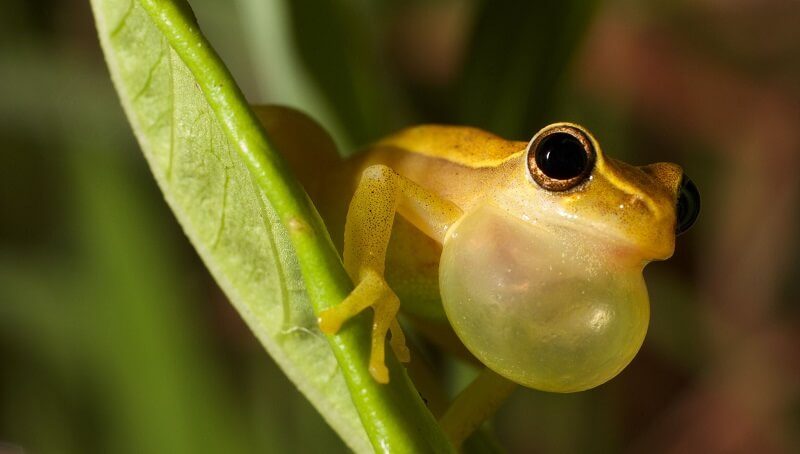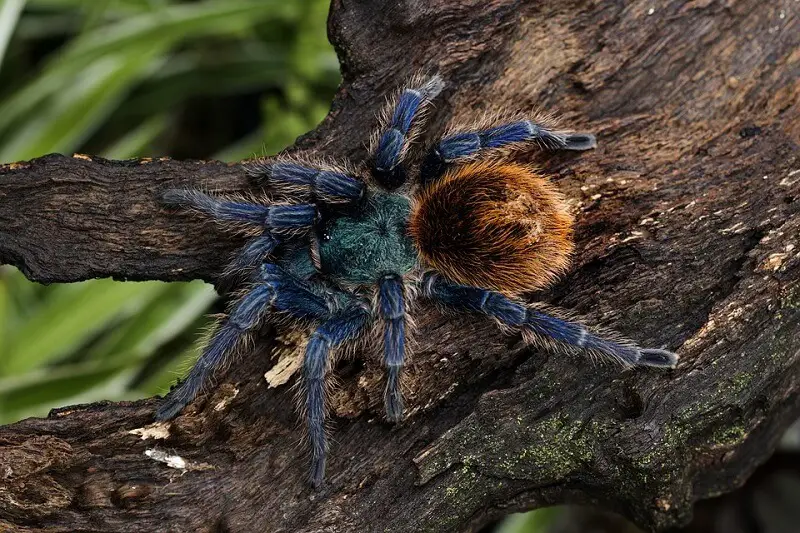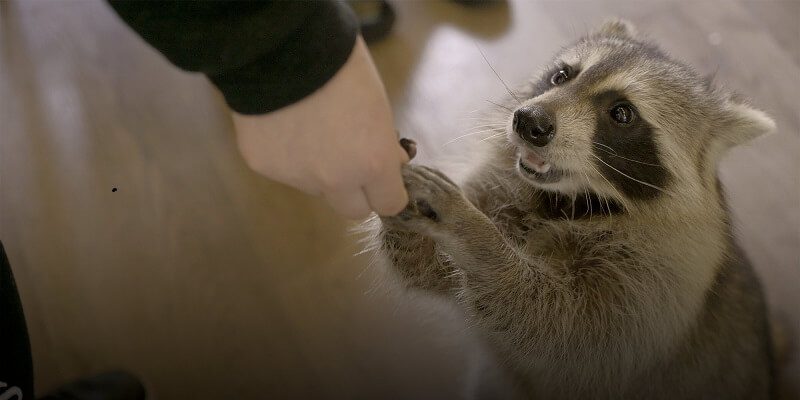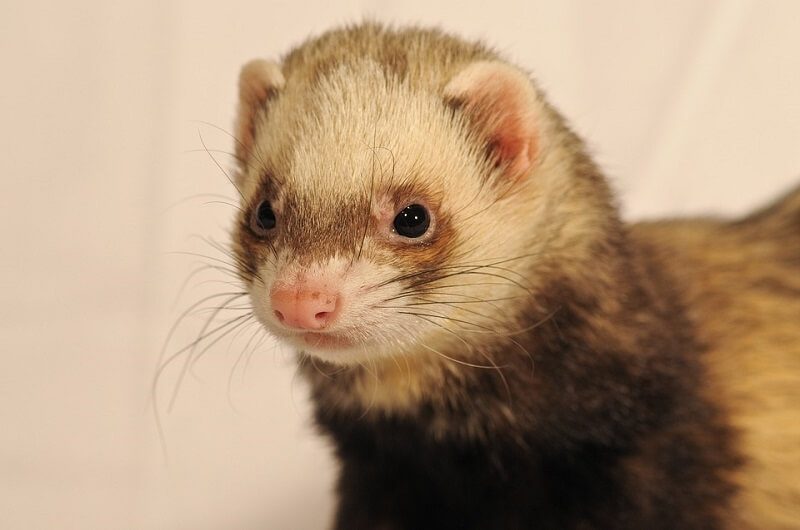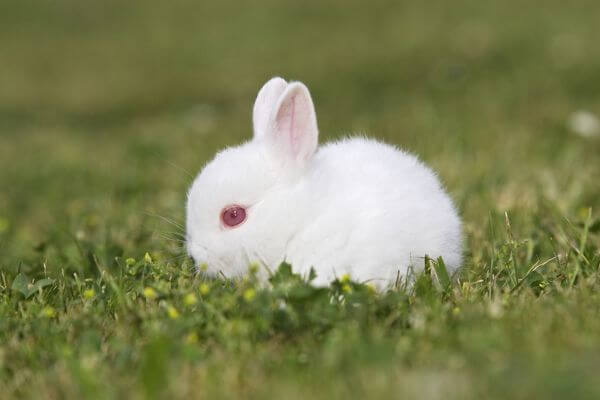Tree frogs will usually be seen on tall vegetation, especially on trees. This is where their name comes from. This article will give you a few pointers on the tree frog diet.
The colorful appearance and considerably small size, make tree frogs very popular exotic pets. There isn’t just one tree frog type but a bunch, belonging to families like Hyperoliidae, Centrolenidae, Hylidae, and Rhacophoridae. Even a few genera, like Pedostibes of the Bufonidae family or the Boophis of the Mantellidae family, will have a few tree frogs among them. Even so, the ones considered the true tree frogs are frogs from the Hylidae family, although this particular family also has semi-aquatic or terrestrial species. Most, if not all of the tree frogs, will be found on tall shrubs and trees near of still-water bodies, regardless of their actual genera or family.
Tree frogs can have a lot of different color ranges, from gray, brown, or green, to a mix of brighter colors. You should also know that most bright-colored tree frogs are considered highly toxic. As a camouflage defensive system, some frogs will also have the ability to change the color of their body. Some might even have different patterns and designs on their body like spots and lines.
You might also like my articles on the diet of normal frogs and cute names for frogs.
They usually have a body length that could range from 1 to 6 inches. Their weight will also be anywhere between 2 and 17 grams. These frogs will have a lifespan between 2 and 4 years, and sometimes more. The tree frog has long legs, perfect for climbing and jumping, as an adaptive measure for arboreal life. To cling to leaves, branches, or stems, these creatures also have adhesive toe pads. They have almost binocular vision due to their protruding, round, and big eyes. To catch their prey, tree frogs will use their very sticky tongues, just like most other frogs.
The Diet of Tree Frogs
Although some tree frogs are seen hunting during the daytime, this only happens if they’re hungry enough, as these creatures are mostly nocturnal. Usually, tree frogs are carnivorous by nature, although their general diet will differ slightly depending on their species and geographical location. Their usual diet will be made from a combination of small invertebrates, worms, and insects. Experts have also noticed that there are species, especially on the larger side, that will eat small fish, other frogs, and even small mammals. One of the most popular tree frogs is the Cuban frog, which can be found in North America and is the largest known tree frog. These frogs are known to be great climbers, which enables them to hunt and feed on a lot of creatures, like bird hatchlings, crustaceans, other frogs, lizards, snakes, spiders, snails, and insects.
Food for Pet Tree Frogs
These frogs can usually be kept as pets, as most of them are docile in nature and very attractive in appearance. This is why a lot of people will want to own one of these exotic creatures as a pet. Out of all the tree frogs, the most popular breeds are the red-eyed frog, the Australian green tree frog, and the American green tree frog. It might seem easy to attend for a tree frog at first, but before getting one, you should have extensive knowledge of these creatures and the proper way in which you can care for them. Depending on their actual species and sizes, these requirements can differ.
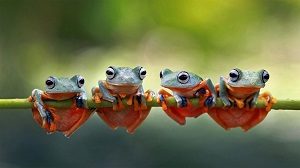 When it comes to actually feeding your pet tree frog, you should always have a supply of live mealworms, flies, and live crickets on hand. Keep in mind that you will have to understand your particular breed and attend to its individual requirements and needs. For example, the Pacific tree frog will eat mostly ants, flies, beetles, and spiders, while the green tree frogs will like worms and crickets more. Most of the time, you will feed your tree frog with worms and insects, especially the gut-loaded ones. You should always try to get prey of appropriate size based on the size of your frog.
When it comes to actually feeding your pet tree frog, you should always have a supply of live mealworms, flies, and live crickets on hand. Keep in mind that you will have to understand your particular breed and attend to its individual requirements and needs. For example, the Pacific tree frog will eat mostly ants, flies, beetles, and spiders, while the green tree frogs will like worms and crickets more. Most of the time, you will feed your tree frog with worms and insects, especially the gut-loaded ones. You should always try to get prey of appropriate size based on the size of your frog.
If you have a juvenile frog, then you can use cockroaches, moths, and flies as part of its daily diet. You will have to feed an adult frog around two to three times per week. You can also give them two to five small crickets every other day. Before giving it to your frog, try to dust the insect with multivitamin powder and calcium. You will also have to mist your frog with water that has no chlorine, each day, preferably in the morning. You should also have a separate enclosure to use for feeding. When it comes to the pet tree frog, you can get live crickets or other types of food from the pet store. Tadpoles won’t be carnivores at first and will require pond plants and algae for a healthy diet. You can also feed them boiled lettuce leaves until they grow and turn to a carnivorous diet.
As you might already know, frogs will stick their tongues out to hunt their prey. THey will eat any insects that get stuck on their tongues, including flies or moths. Although they will usually just stay put and wait for the prey to land on their tongues, they might jump or leap in an effort to catch prey. Frogs don’t have teeth good enough to chew or even cut their food, so they will swallow it whole. Tree frogs will like to hunt live insects even when kept as pets, although babies will still have to be fed. Although you will have to feed them consistently and regularly, you should try to avoid overfeeding them.
